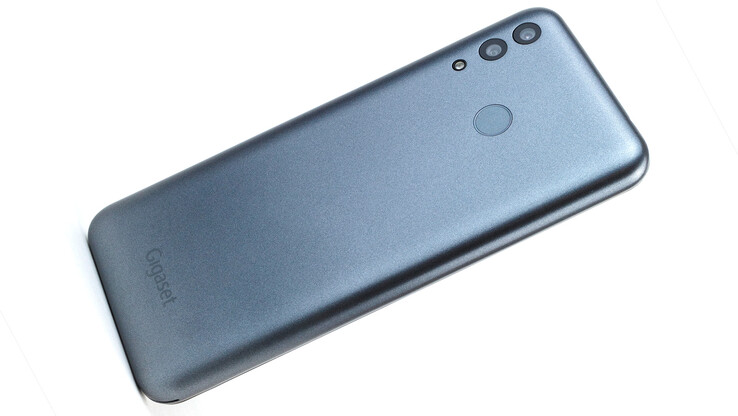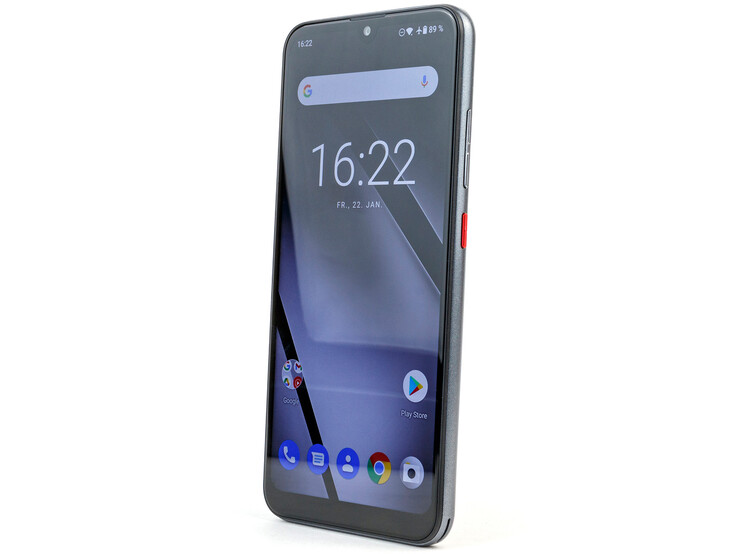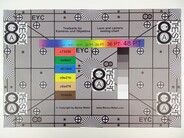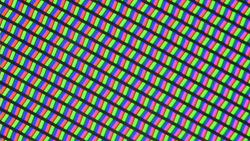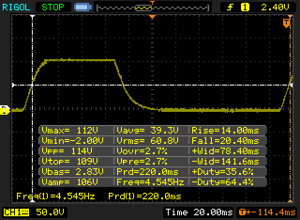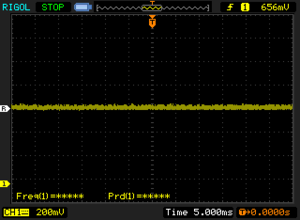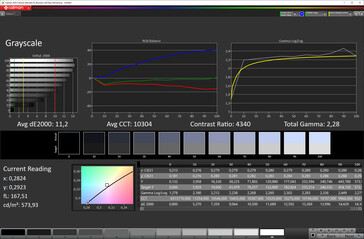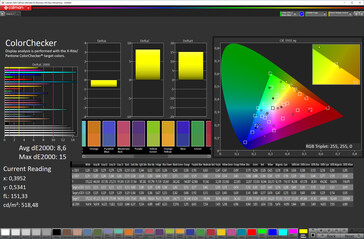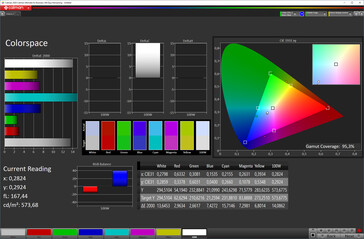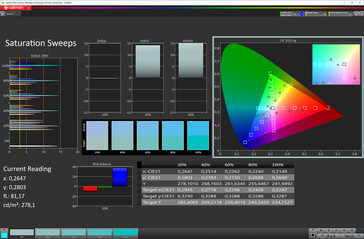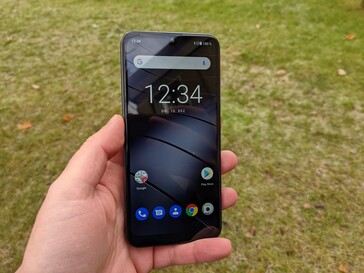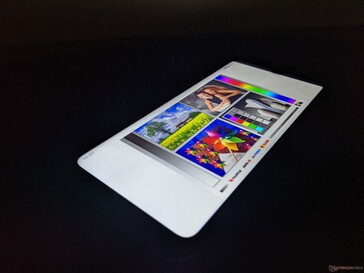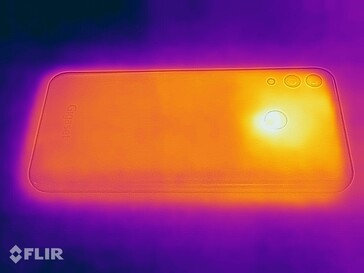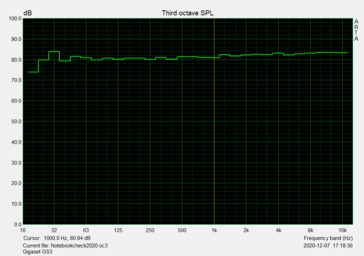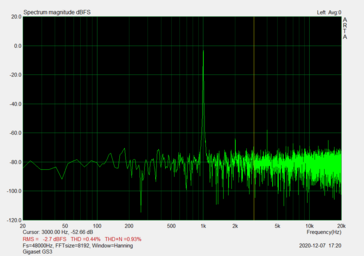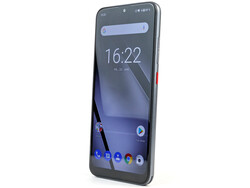Gigaset GS3 Smartphone Review - Affordable phone with wireless charging
Possible competitors in comparison
Bewertung | Rating Version | Datum | Modell | Gewicht | Laufwerk | Groesse | Aufloesung | Preis ab |
|---|---|---|---|---|---|---|---|---|
| 75.4 % v7 (old) | v7 (old) | 02 / 2021 | Gigaset GS3 Helio A25, PowerVR GE8320 | 172 g | 64 GB eMMC Flash | 6.10" | 1560x720 | |
| 78 % v7 (old) | v7 (old) | 01 / 2021 | Xiaomi Poco M3 SD 662, Adreno 610 | 198 g | 128 GB UFS 2.2 Flash | 6.53" | 2340x1080 | |
| 76 % v7 (old) | v7 (old) | 11 / 2020 | Wiko View5 Helio A25, PowerVR GE8320 | 201 g | 64 GB eMMC Flash | 6.55" | 1600x720 | |
| 77 % v7 (old) | v7 (old) | 09 / 2020 | Oppo A52 SD 665, Adreno 610 | 192 g | 64 GB UFS 2.1 Flash | 6.50" | 2400x1080 |
Case, equipment and operation
The display of the Gigaset GS3 sits in a plastic unibody and is protected by an unspecified scratch-resistant 2.5D glass. The back can be removed and provides access to the two nano-SIM slots, the separate microSD slot, and the removable battery. The manufacturer also offers the cases in a total of five colors, which can also be purchased separately for little money (4 Euros). Also rare: The cameras are flush with the back. The build quality as such is solid and does not give reason for criticism
The USB-C port supports OTG. A jack port is also on board. An optional headset connected there serves as an antenna for the integrated radio receiver. A small notification LED is also integrated into the frame. The fingerprint scanner on the back unlocks the smartphone at an appealing speed and works reliably. The unlocking process works directly from standby and leads the user to the home screen or to a still open app. It also supports gestures like scrolling through the system and opening and triggering the camera. Alternatively, 2D face recognition is also available. The vibration motor is quite loud and spongy. No differences to the GS4 can be found in these points
This also applies to the user interface, which offers a fairly pure Android 10 and integrates small additional software features, including extended gesture control. Unlike the GS4, however, there will be no update to Android 11 for the GS3, but only quarterly security updates for a period of two years. However, the current update is a long time coming because the security updates are still up to November 5, 2020 at the time of testing. The GS3 also lacks DRM certification, so correspondingly protected content cannot be viewed in HD
The Wi-Fi module of the Gigaset GS3 delivers stable transmission rates in both directions in combination with our reference router Netgear Nighthawk AX12. We also liked the range in the test. The smartphone accesses the data network via LTE at best and covers all relevant bands in this country except for band 28, but not much more. The telephony features are very similar to those of the GS4 and the GS3 can convince with a good voice quality. VoLTE and WLAN calling are supported.
| Networking | |
| iperf3 transmit AX12 | |
| Gigaset GS3 | |
| Wiko View5 | |
| Oppo A52 | |
| Xiaomi Poco M3 | |
| iperf3 receive AX12 | |
| Gigaset GS3 | |
| Oppo A52 | |
| Wiko View5 | |
| Xiaomi Poco M3 | |
Cameras - Weak dual camera
Compared with its big sister GS4, the dual camera has to make visible sacrifices in terms of quality. This applies to both the main camera and the ultra-wide-angle lens. The lenses can hardly compensate backlight and reveal deficits in the dynamic range. This can suffice for general documentations, but no one will have fun with photography with this camera
The front-facing camera does a bit better and delivers decent results, but it is also weaker than the one in the GS4. Videos are recorded in Full HD (30 FPS) at best on both sides
Image comparison
Choose a scene and navigate within the first image. One click changes the position on touchscreens. One click on the zoomed-in image opens the original in a new window. The first image shows the scaled photograph of the test device.
WeitwinkelWeitwinkelZoom (4/5-fach)UltraweitwinkelLow Light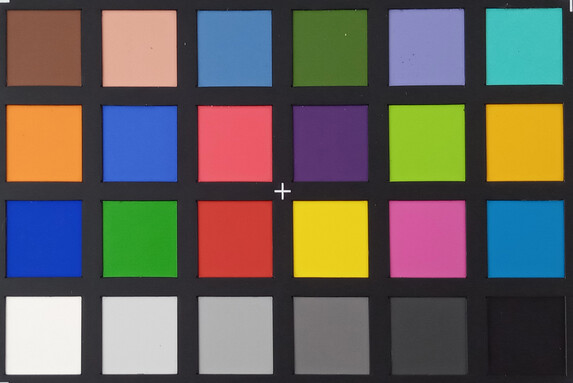

Display - Bright IPS as the trump card in the Gigaset GS3
The 6.1-inch IPS display of the Gigaset GS3 works with the small HD resolution, which is why pixel structures can definitely be recognized. However, such a high brightness is hardly found in this price range. The panel achieves up to 586 cd/m² with the ambient light sensor enabled, and the rates are also on a similar level in manual mode and when measuring with an even distribution of bright and dark areas (APL50)
It is also pleasing that Gigaset does not use pulse width modulation. Only the color calibration is much too cool
| |||||||||||||||||||||||||
Brightness Distribution: 93 %
Center on Battery: 586 cd/m²
Contrast: 4883:1 (Black: 0.12 cd/m²)
ΔE ColorChecker Calman: 8.6 | ∀{0.5-29.43 Ø4.78}
ΔE Greyscale Calman: 11.2 | ∀{0.09-98 Ø5}
95.3% sRGB (Calman 2D)
Gamma: 2.28
CCT: 10304 K
| Gigaset GS3 IPS, 1560x720, 6.1" | Xiaomi Poco M3 IPS, 2340x1080, 6.5" | Wiko View5 LCD IPS, 1600x720, 6.6" | Oppo A52 IPS, 2400x1080, 6.5" | |
|---|---|---|---|---|
| Response Times | 30% | 20% | 40% | |
| Response Time Grey 50% / Grey 80% * (ms) | 75.2 ? | 44 ? 41% | 54 ? 28% | 40.4 ? 46% |
| Response Time Black / White * (ms) | 34.4 ? | 28 ? 19% | 30.4 ? 12% | 23.2 ? 33% |
| PWM Frequency (Hz) | 893 ? | |||
| Screen | 7% | 2% | -10% | |
| Brightness middle (cd/m²) | 586 | 465 -21% | 495 -16% | 492 -16% |
| Brightness (cd/m²) | 568 | 428 -25% | 461 -19% | 472 -17% |
| Brightness Distribution (%) | 93 | 89 -4% | 88 -5% | 93 0% |
| Black Level * (cd/m²) | 0.12 | 0.21 -75% | 0.14 -17% | 0.31 -158% |
| Contrast (:1) | 4883 | 2214 -55% | 3536 -28% | 1587 -67% |
| Colorchecker dE 2000 * | 8.6 | 1.7 80% | 6.5 24% | 3.9 55% |
| Colorchecker dE 2000 max. * | 15 | 3.5 77% | 10 33% | 8.3 45% |
| Greyscale dE 2000 * | 11.2 | 2.4 79% | 6.2 45% | 2 82% |
| Gamma | 2.28 96% | 2.16 102% | 2.22 99% | 2.29 96% |
| CCT | 10304 63% | 6664 98% | 8157 80% | 6910 94% |
| Total Average (Program / Settings) | 19% /
12% | 11% /
6% | 15% /
0% |
* ... smaller is better
Display Response Times
| ↔ Response Time Black to White | ||
|---|---|---|
| 34.4 ms ... rise ↗ and fall ↘ combined | ↗ 14 ms rise | |
| ↘ 20.4 ms fall | ||
| The screen shows slow response rates in our tests and will be unsatisfactory for gamers. In comparison, all tested devices range from 0.1 (minimum) to 240 (maximum) ms. » 92 % of all devices are better. This means that the measured response time is worse than the average of all tested devices (20.2 ms). | ||
| ↔ Response Time 50% Grey to 80% Grey | ||
| 75.2 ms ... rise ↗ and fall ↘ combined | ↗ 38 ms rise | |
| ↘ 37.2 ms fall | ||
| The screen shows slow response rates in our tests and will be unsatisfactory for gamers. In comparison, all tested devices range from 0.165 (minimum) to 636 (maximum) ms. » 99 % of all devices are better. This means that the measured response time is worse than the average of all tested devices (31.6 ms). | ||
Screen Flickering / PWM (Pulse-Width Modulation)
| Screen flickering / PWM not detected | |||
In comparison: 53 % of all tested devices do not use PWM to dim the display. If PWM was detected, an average of 8118 (minimum: 5 - maximum: 343500) Hz was measured. | |||
Performance, emissions and battery life
The Gigaset GS3 is powered by the Helio A25, an entry-level SoC from MediaTek with 4 GB of RAM. Its performance is not particularly high despite eight cores, which is repeatedly reflected in small stutters in everyday use. Those who also want to play games on the go should fall back on simple casual titles. The positive aspect is that the surface hardly heats up significantly even under constant load
The installed eMMC storage is not particularly fast, but it is an appropriate choice in view of the SoC. The microSD slot only offers an average speed and neither masters exFAT nor could it recognize our reference card Toshiba Exceria Pro M501 (UHS-II), which is why we had to fall back on the slower M401 (UHS-I) in the test
The GS3's speaker is characterized by high tones and can also present them linearly, but it already stops below the upper mids, which is why the sound image lacks any depth. An audio jack (SNR: 49.33 dBFS) is available, but it cannot meet high demands either. The best quality results are achieved via USB-C or Bluetooth
On the other hand, the battery runtimes of the GS3 are very good. The 4,000 mAh energy storage lasts for over 21 hours in the test
| PCMark for Android - Work 2.0 performance score (sort by value) | |
| Gigaset GS3 | |
| Xiaomi Poco M3 | |
| Wiko View5 | |
| Oppo A52 | |
| Average Mediatek Helio A25 (4302 - 5364, n=5) | |
| GFXBench | |
| on screen Aztec Ruins Normal Tier Onscreen (sort by value) | |
| Gigaset GS3 | |
| Xiaomi Poco M3 | |
| Wiko View5 | |
| Oppo A52 | |
| Average Mediatek Helio A25 (6.7 - 7.2, n=5) | |
| Average of class Smartphone (6.2 - 166, n=209, last 2 years) | |
| 1920x1080 Aztec Ruins Normal Tier Offscreen (sort by value) | |
| Gigaset GS3 | |
| Xiaomi Poco M3 | |
| Wiko View5 | |
| Oppo A52 | |
| Average Mediatek Helio A25 (3.5 - 4, n=5) | |
| Average of class Smartphone (3.4 - 367, n=209, last 2 years) | |
| on screen Aztec Ruins High Tier Onscreen (sort by value) | |
| Gigaset GS3 | |
| Xiaomi Poco M3 | |
| Wiko View5 | |
| Oppo A52 | |
| Average Mediatek Helio A25 (4.2 - 4.5, n=5) | |
| Average of class Smartphone (0.85 - 144, n=210, last 2 years) | |
| 2560x1440 Aztec Ruins High Tier Offscreen (sort by value) | |
| Gigaset GS3 | |
| Xiaomi Poco M3 | |
| Wiko View5 | |
| Oppo A52 | |
| Average Mediatek Helio A25 (1.2 - 1.4, n=5) | |
| Average of class Smartphone (1.2 - 129, n=209, last 2 years) | |
| Gigaset GS3 | Xiaomi Poco M3 | Wiko View5 | Oppo A52 | Average 64 GB eMMC Flash | Average of class Smartphone | |
|---|---|---|---|---|---|---|
| AndroBench 3-5 | 177% | 5% | 142% | 17% | 958% | |
| Sequential Read 256KB (MB/s) | 267.9 | 509 90% | 268.4 0% | 475.9 78% | 277 ? 3% | 2223 ? 730% |
| Sequential Write 256KB (MB/s) | 171.1 | 269.2 57% | 223.4 31% | 220.6 29% | 178.4 ? 4% | 1838 ? 974% |
| Random Read 4KB (MB/s) | 53.1 | 147 177% | 49.56 -7% | 136.2 156% | 60.7 ? 14% | 295 ? 456% |
| Random Write 4KB (MB/s) | 18.89 | 154.1 716% | 16.29 -14% | 147 678% | 33.8 ? 79% | 335 ? 1673% |
| Sequential Read 256KB SDCard (MB/s) | 75.5 ? | 85.9 ? 14% | 82 ? 9% | 40.16 ? -47% | 77.4 ? 3% | |
| Sequential Write 256KB SDCard (MB/s) | 58.2 ? | 64.2 ? 10% | 62.7 ? 8% | 33.38 ? -43% | 58.3 ? 0% |
Temperature
(+) The maximum temperature on the upper side is 31.9 °C / 89 F, compared to the average of 35.2 °C / 95 F, ranging from 21.9 to 247 °C for the class Smartphone.
(+) The bottom heats up to a maximum of 28.3 °C / 83 F, compared to the average of 34 °C / 93 F
(+) In idle usage, the average temperature for the upper side is 27.3 °C / 81 F, compared to the device average of 32.9 °C / 91 F.
Loudspeaker
Gigaset GS3 audio analysis
(+) | speakers can play relatively loud (86.5 dB)
Bass 100 - 315 Hz
(-) | nearly no bass - on average 51.1% lower than median
(±) | linearity of bass is average (8.6% delta to prev. frequency)
Mids 400 - 2000 Hz
(±) | reduced mids - on average 9.2% lower than median
(±) | linearity of mids is average (9.1% delta to prev. frequency)
Highs 2 - 16 kHz
(+) | balanced highs - only 3.9% away from median
(+) | highs are linear (3.5% delta to prev. frequency)
Overall 100 - 16.000 Hz
(-) | overall sound is not linear (30.5% difference to median)
Compared to same class
» 79% of all tested devices in this class were better, 4% similar, 17% worse
» The best had a delta of 11%, average was 35%, worst was 134%
Compared to all devices tested
» 88% of all tested devices were better, 3% similar, 9% worse
» The best had a delta of 4%, average was 24%, worst was 134%
Wiko View5 audio analysis
(+) | speakers can play relatively loud (92.6 dB)
Bass 100 - 315 Hz
(-) | nearly no bass - on average 23.8% lower than median
(+) | bass is linear (3.4% delta to prev. frequency)
Mids 400 - 2000 Hz
(±) | higher mids - on average 7.9% higher than median
(+) | mids are linear (6% delta to prev. frequency)
Highs 2 - 16 kHz
(±) | higher highs - on average 5.5% higher than median
(+) | highs are linear (3.6% delta to prev. frequency)
Overall 100 - 16.000 Hz
(±) | linearity of overall sound is average (19.1% difference to median)
Compared to same class
» 24% of all tested devices in this class were better, 9% similar, 67% worse
» The best had a delta of 11%, average was 35%, worst was 134%
Compared to all devices tested
» 45% of all tested devices were better, 7% similar, 48% worse
» The best had a delta of 4%, average was 24%, worst was 134%
Battery life
| Gigaset GS3 4000 mAh | Xiaomi Poco M3 6000 mAh | Wiko View5 5000 mAh | Oppo A52 5000 mAh | Average of class Smartphone | |
|---|---|---|---|---|---|
| Battery Runtime | |||||
| WiFi Websurfing (h) | 21.1 | 20.8 -1% | 18.9 -10% | 16.5 -22% | 19.2 ? -9% |
Pros
Cons
Verdict - Modular starter with strengths
The Gigaset GS3 has a lot to offer despite its low price and has features that are hardly found in current smartphones. These include the removable back and the replaceable battery. The bright IPS display looks more modern, even though it only offers a 720p resolution and a too cool display. A unique feature in this price range is the option to charge the smartphone wirelessly. The Gigaset smartphone can also shine with a good voice quality and excellent battery runtimes
The Gigaset GS3 shows many good approaches, but also reveals weaknesses
The good overall impression is marred by a thin speaker, a weak dual camera, and a lame system performance. The last two points in particular speak in favor of the slightly more expensive GS4, which is also supposed to get Android 11. Furthermore, the GS3 is not Made in Germany, but is manufactured in the Far East
However, users who want to spend as little money as possible on a smartphone can be quite happy with the GS3 if long runtimes and classic telephony features are the main focus
Price and availability
The Gigaset GS3 is available in the manufacturer's online store, where exchangeable covers in different colors (4 Euros each) and the replacement battery (25 Euros) can also be purchased. Alternatively, the GS 3 is also available on Amazon, among others.
Gigaset GS3
- 02/15/2021 v7 (old)
Daniel Schmidt




